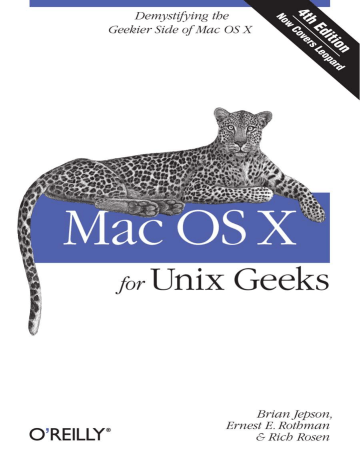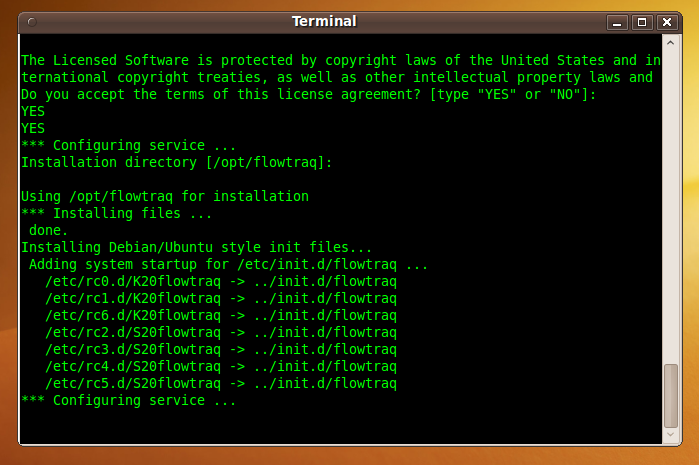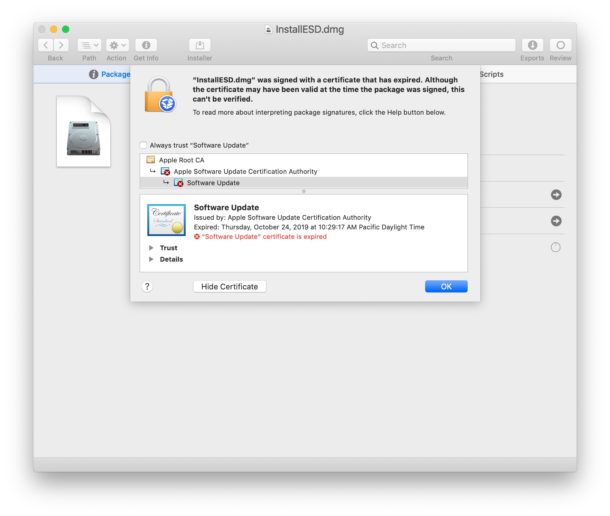

- #INSTALLING UNIX ON MAC OS FOR MAC#
- #INSTALLING UNIX ON MAC OS INSTALL#
- #INSTALLING UNIX ON MAC OS UPDATE#
- #INSTALLING UNIX ON MAC OS SOFTWARE#
To work with a private repository over HTTPS, you must supply a username and password each time you push or pull.

#INSTALLING UNIX ON MAC OS INSTALL#
Install the git-credential-osxkeychain helperīitbucket supports pushing and pulling your Git repositories over both SSH and HTTPS. Install Git with bash completion, the OS X keychain helper, and the docs: $ sudo port install git +bash_completion+credential_osxkeychain+doc Search for the latest available Git ports and variants: $ port search git $ port variants git
#INSTALLING UNIX ON MAC OS UPDATE#
Open your terminal and update MacPorts: $ sudo port selfupdate If you have installed MacPorts to manage packages on OS X, you can follow these instructions to install Git: These details will be associated with any commits that you create: $ git config -global user.name "Emma Paris" $ git config -global user.email To make Git remember your username and password when working with HTTPS repositories, install the git-credential-osxkeychain helper. Verify the installation was successful by typing which git -version: $ git -version git version 2.9.2Ĭonfigure your Git username and email using the following commands, replacing Emma's name with your own. Open your terminal and install Git using Homebrew: $ brew install git If you have installed Homebrew to manage packages on OS X, you can follow these instructions to install Git: These details will be associated with any commits that you create: $ git config -global user.name "Emma Paris" $ git config -global user.email To make Git remember your username and password when working with HTTPS repositories, configure the git-credential-osxkeychain helper. Open a terminal and verify the installation was successful by typing git -version: $ git -version git version 2.9.2Ĭonfigure your Git username and email using the following commands, replacing Emma's name with your own.
#INSTALLING UNIX ON MAC OS FOR MAC#
The easiest way to install Git on a Mac is via the stand-alone installer:ĭownload the latest Git for Mac installer. You may want to install a newer version of Git using one of the methods below: Git for Mac Installer $ git -version git version 2.7.0 (Apple Git-66)Īpple actually maintain and ship their own fork of Git, but it tends to lag behind mainstream Git by several major versions. To find out, open a terminal and enter git -version.

In fact, if you've installed XCode (or it's Command Line Tools), Git may already be installed. Installing Xcode Developer Toolsġ.There are several ways to install Git on a Mac. While you can run most of the MacPort commands without Xcode, you won’t be able to run many of the packages until you install it. You can download Xcode from the Mac App Store or Apple’s developer website. MacPorts requires the latest version of Xcode for your OS version.
#INSTALLING UNIX ON MAC OS SOFTWARE#
You can also use MacPorts to install open-source software like GIMP. Mac users won’t find common command-line tools like nmap or wget, and there’s no native package manager on the Mac to provide them. If you read our post on Homebrew, you know that macOS is missing some “standard” Linux terminal commands out of the box. This saves you the trouble of downloading repositories from GitHub and building software from source packages while still getting access to a wide range of Linux’s best command-line tools and GUI applications. When you find what you need, MacPorts downloads and installs the appropriate software and dependencies in the right place. Like any package manager, MacPorts searches a library of downloadable software. Most of these applications are open-source, command-line utilities, but there are a fair share of “real” open-source, GUI-based applications.


 0 kommentar(er)
0 kommentar(er)
